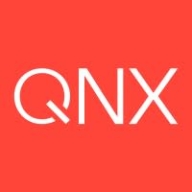

openSUSE Leap and QNX Neutrino are competing in the operating systems category. openSUSE Leap has the upper hand in flexibility, cost-effectiveness, and community support, while QNX Neutrino excels in real-time performance and reliability, making it highly suitable for mission-critical applications.
Features: openSUSE Leap offers extensive customization options, a broad repository of applications, and is suitable for desktop and server environments. QNX Neutrino is known for its microkernel architecture, ensuring high reliability and real-time performance, essential for embedded systems in critical industries. QNX Neutrino stands out with its specialized real-time capabilities.
Ease of Deployment and Customer Service: openSUSE Leap is praised for its straightforward installation process and strong community support. QNX Neutrino, despite being more complex, provides tailored support services and detailed documentation. While openSUSE Leap is generally easier for a wide audience, QNX Neutrino is best with professional support for specialized deployments.
Pricing and ROI: openSUSE Leap offers a cost-effective setup owing to its open-source model, resulting in significant ROI for various applications. QNX Neutrino requires a higher initial investment but provides a strong ROI in environments demanding high reliability and performance, making it valuable for mission-critical environments.
openSUSE Leap is a brand new way of building openSUSE and is new type of hybrid Linux distribution. Leap uses source from SUSE Linux Enterprise (SLE), which gives Leap a level of stability unmatched by other Linux distributions, and combines that with community developments to give users, developers and sysadmins the best stable Linux experience available. Contributor and enterprise efforts for Leap bridge a gap between matured packages and newer packages found in openSUSE’s other distribution Tumbleweed.
QNX Neutrino, a real-time operating system from BlackBerry, delivers robust performance for embedded systems across industries like automotive, aerospace, and telecommunications.
QNX Neutrino is designed for high-performance embedded applications, providing deterministic responses that are essential in systems where timing is critical. Its microkernel architecture ensures maximum security and reliability, making it a trusted choice for developing safety-critical applications. QNX Neutrino's ability to support multitasking and asymmetrical processing adds flexibility, supporting resource utilization across different hardware environments.
What are the key features of QNX Neutrino?In industries like automotive, QNX Neutrino powers complex systems such as Advanced Driver Assistance Systems, ensuring real-time data processing for enhanced safety. In aerospace, it supports flight control systems where reliability and timing precision are crucial. Telecommunications benefit from its scalability and fault resilience, enabling robust network infrastructure.
We monitor all Operating Systems (OS) for Business reviews to prevent fraudulent reviews and keep review quality high. We do not post reviews by company employees or direct competitors. We validate each review for authenticity via cross-reference with LinkedIn, and personal follow-up with the reviewer when necessary.